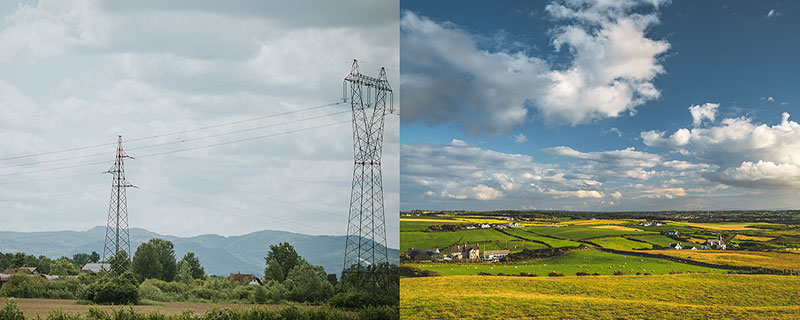UK’s Over-Reliance on Overhead Power Lines: Calls for a Strategic Shift
Underground vs. overhead lines
New Whitepaper Challenges UK’s Over-Reliance on Overhead Power Lines: Calls for Strategic Shift to Underground Cabling – Crossed Wires: Rethinking the UK’s Energy Infrastructure Debate offers evidence-based solutions to modernise the grid whilst protecting landscapes and boosting resilience.
As the UK races to meet its net-zero targets, a whitepaper produced by Centriforce, Crossed Wires: Rethinking the Underground vs Overhead Debate, urges policymakers and industry leaders to reconsider the default reliance on overhead transmission lines (OHL) in the national electricity network.
Currently, the UK depends on 4,500 miles of overhead lines, compared to just 900 miles of underground cables, despite growing evidence that buried infrastructure can reduce visual blight, enhance resilience, and align with environmental goals. The whitepaper argues for a more balanced approach, blending overhead and underground solutions to create a grid fit for the 21st century.
The Case for Change
Overhead lines, whilst cheaper to install, face mounting criticism for their impact on landscapes, vulnerability to extreme weather and risks to wildlife and workers. Meanwhile, projects like the North Wessex Downs and Cotswolds National Landscape demonstrate how undergrounding can restore natural beauty without compromising reliability. The National Grid’s £500 million Visual Impact Provision fund has already begun removing pylons in 2024.
Key Findings:
- Environmental & Aesthetic Benefits: Underground cables eliminate visual intrusion in protected areas like AONBs and National Parks.
- Resilience Gains: Buried lines are less prone to storm damage, reducing outage risks.
- Innovation in Cost & Safety: Advances like the Centriforce Stokbord® Utility system (used in the Dogger Bank Wind Farm) have slashed installation time by 30x and improved worker safety.
A Balanced Future
The whitepaper acknowledges challenges—undergrounding can cost 5x more than OHL, and faults are harder to locate. Yet it argues that strategic deployment, particularly in urban and ecologically sensitive areas, could deliver long-term value.
“This isn’t about burying every cable,” says Jonathan Pearce, CEO, “but about smarter planning. As the nation builds a net-zero grid, we must weigh short-term savings against lasting impacts on communities, nature, and resilience.”
Download the Whitepaper
For data-driven analysis, case studies, and policy recommendations, access the full report.






Leave a Reply
Want to join the discussion?Feel free to contribute!